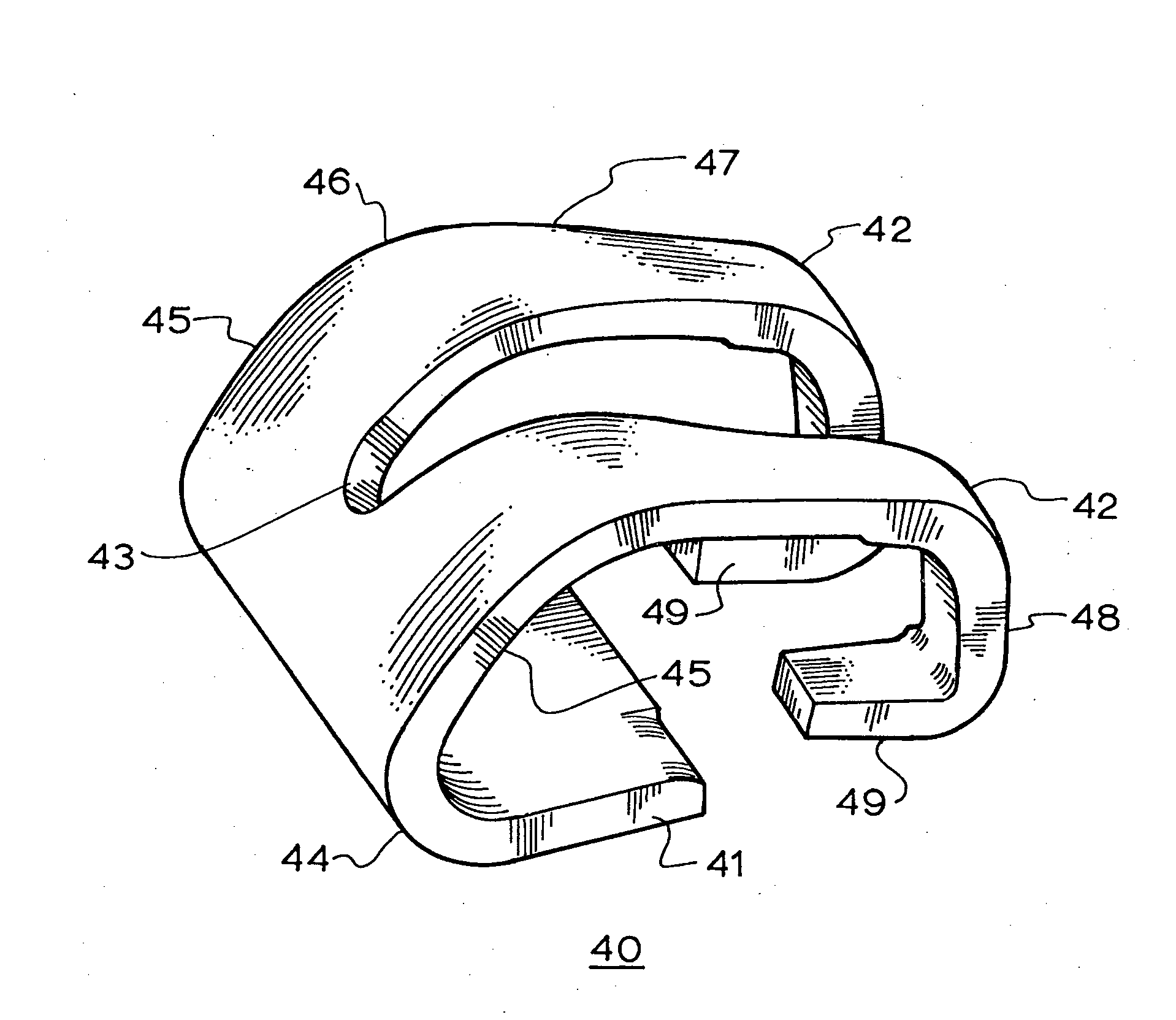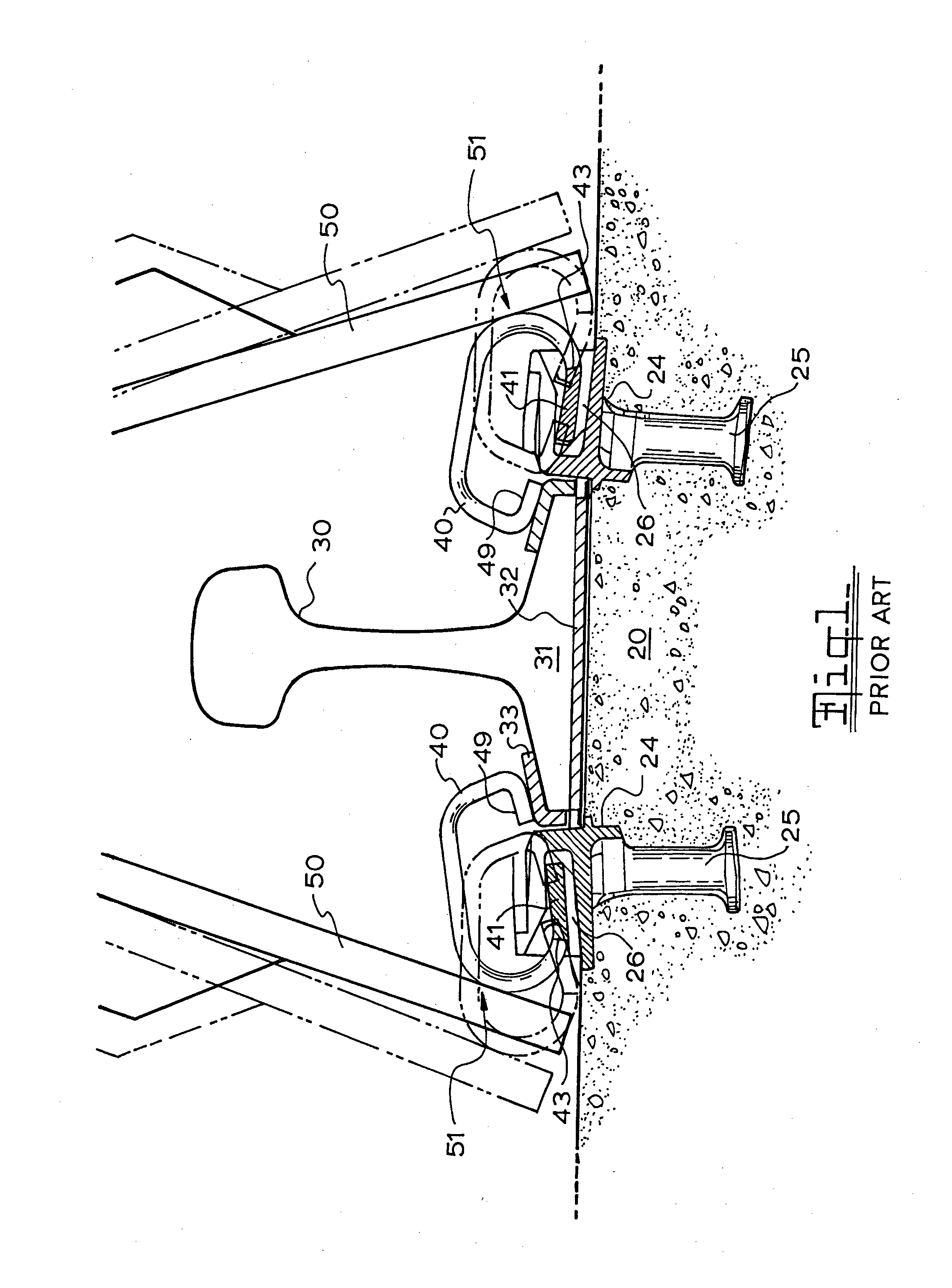Rail clip
a technology for rail clips and clips, applied in the field of rail clips, can solve the problems of clip damage, loss of clamping force, serious problems on the track, etc., and achieve the effect of reducing the tendency for the back of the clip to lift up during fitting
- Summary
- Abstract
- Description
- Claims
- Application Information
AI Technical Summary
Benefits of technology
Problems solved by technology
Method used
Image
Examples
Embodiment Construction
[0033]Preferred embodiments of the invention will now be described with reference to the drawings in which
[0034]FIG. 1 is a cross sectional view of a prior art rail seat using a prior art Young clip showing the clip in a preload and a load position Z;
[0035]FIG. 2 is a cross sectional view of a rail seat using a rail clip according to the present invention showing the clip in a preload and a load position;
[0036]FIG. 3 is a perspective view of a rail clip according to the present invention;
[0037]FIG. 4 illustrates the deflection of the clip during manufacture and use.
[0038]FIG. 1 illustrates the prior art Young clip. The components of a typical rail seat are the concrete rail tie 20, the rail 30 with the rail base 31 seating on the rail pad 32 lying between the rail base 31 and the rail tie 20. On either side of the rail 30 are the clip support shoulders 24 with the shoulder legs 25 embedded in the concrete tie 20 and the clip recesses 26 on the surface of the tie. The rail clip 40 ha...
PUM
 Login to View More
Login to View More Abstract
Description
Claims
Application Information
 Login to View More
Login to View More - R&D
- Intellectual Property
- Life Sciences
- Materials
- Tech Scout
- Unparalleled Data Quality
- Higher Quality Content
- 60% Fewer Hallucinations
Browse by: Latest US Patents, China's latest patents, Technical Efficacy Thesaurus, Application Domain, Technology Topic, Popular Technical Reports.
© 2025 PatSnap. All rights reserved.Legal|Privacy policy|Modern Slavery Act Transparency Statement|Sitemap|About US| Contact US: help@patsnap.com



